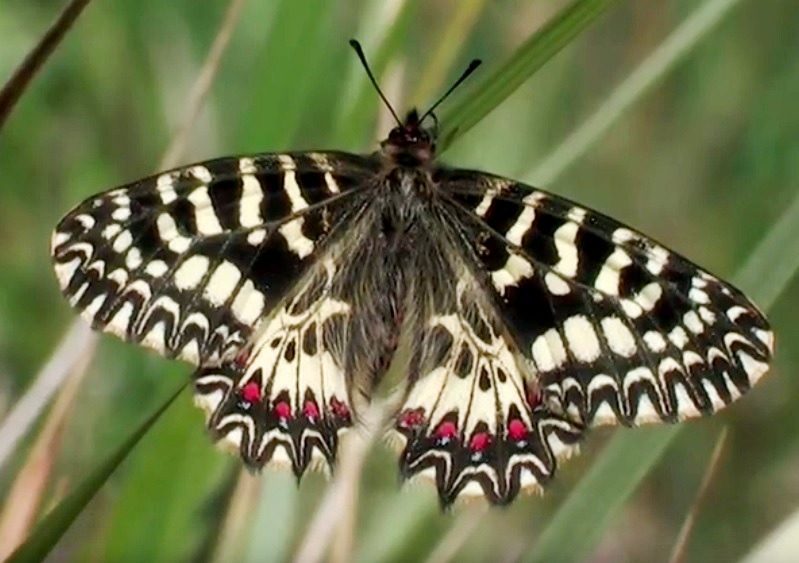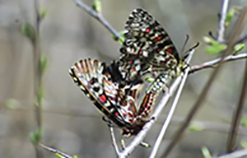

The Southern Festoon (Z. polyxena Denis & Schiffermüller, 1775)
The Southern Festoon, familly of Papilionidae, flies in the South of France, in a single generation from the end of March to the end of May. It favours mesophytic grasslands, banks of rivers or lakes, clearings, wet spots in the Garrigue and the edges of cultivated areas where small, much localized populations live. Very territorial, the male patrols energetically over its territory with a low and persistent flight or defend its territory from a perch in the low vegetation. In the South, its preferred plant is the Round-leaved Birthwort (Aristolochia rotunda). The female lays her eggs on both sides of the leaves of the host plant. The just hatched caterpillar goes in search of a Round-leaved Birthwort flower in which to shelter and feed on from inside.
The mature caterpillar moves towards a dense tuft of grass, in which it weaves a loose silken net. For the first time is filmed how, the chrysalis squirms vigorously and moves the silken belt to its hooked-brush on the tip of its head. A second round follows, joining the two silken threads, thus securing the chrysalis to its twig. This behavior of the chrysalis is only known from the genus Zerynthia. The next spring the butterfly emerges.
Although the Southern Festoon is on the red list of protected butterflies in France, the wild places where the life cycle of this butterfly takes place are not, and unfortunately in the Midi their habitat is endangered and declining every year.

The dynamic world of the Zerynthias (Zerynthia polyxena & Z. rumina)
An extract of the documentary of the Spanish Festoon (Zerynthia rumina Linné, 1758) in its dry habitat and the Southern Festoon (Zerynthia polyxena Denis & Schiffermüller, 1775) in its wetland habitat. See their life-cycle from mating, egg-laying on their remarkable host-plants from the genus Aristolochia , the development of the caterpillars and hatching of the chrysalises of these beautiful butterflies.
An inter-specific crossing was photographed in spring 2004. The previous year devastating forest fires have created corridors between dry and humid habitats that some females have explored, through the habitat of the other species.
